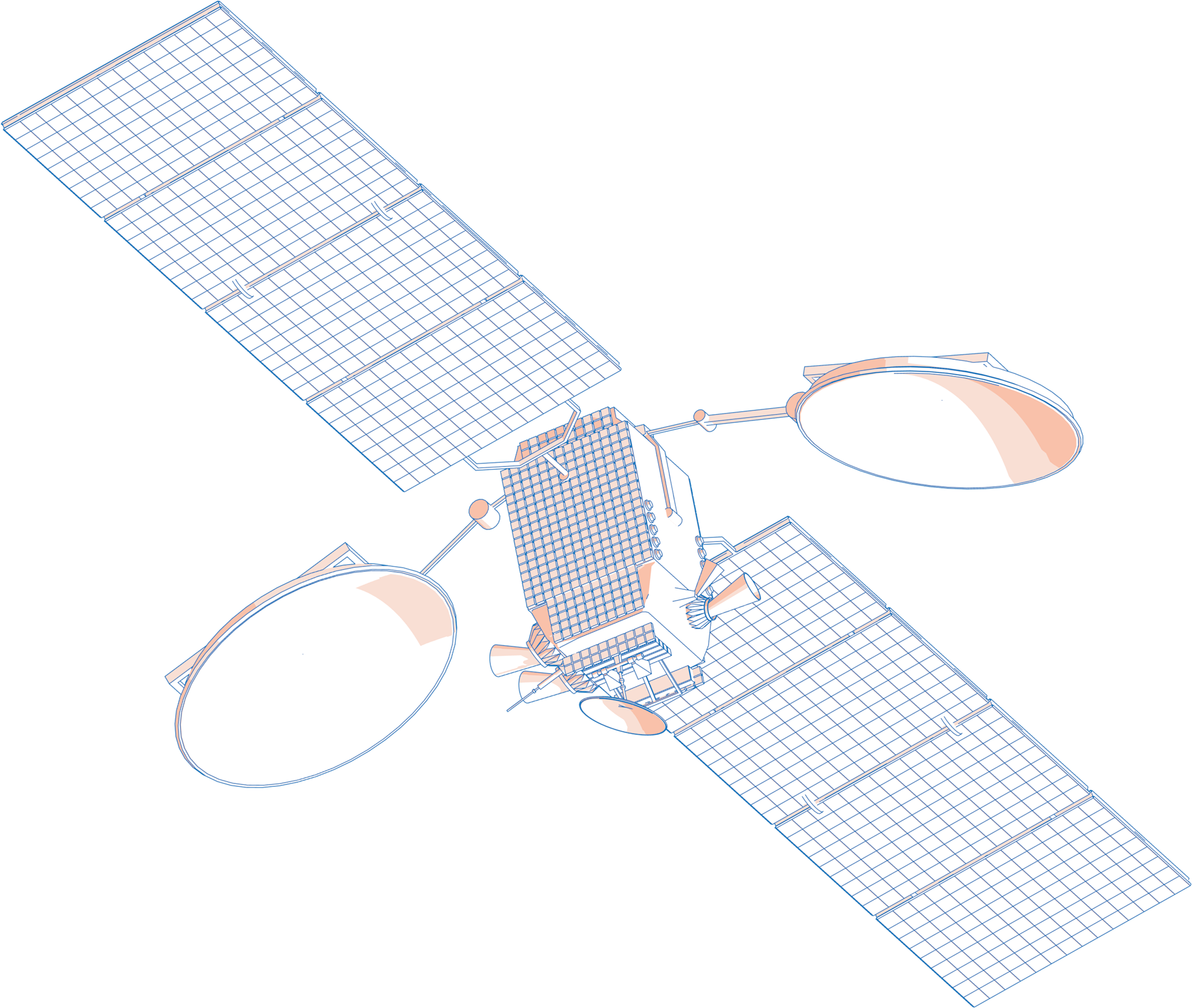According to Russian Satellite Communications Company, a malfunction that occurred on the Express-AM1 satellite on April 24, 2010 has made it impossible to adjust this spacecraft’s inclination. Despite this situation RSCC is not planning to take the satellite out of service or move it to a different orbital slot. The satellite will continue to be used at 40E.
Preliminary analysis of the expected changes in the inclination of the Express-AM1 shows the following: — if equipped with automatic tracking systems, stations will be able to continue operating via the Express-AM1 satellite in C and Ku bands with no constraints until it is decided to decommission the satellite. Ku band: — with a satellite inclination in excess of ± 0.1 degrees, earth stations larger than 4.8 m and with no tracking will not be able to support 24-hour satellite telecommunications service. After June 10, 2010 such systems will daily have two periods of degraded service quality or even no-signal periods while the satellite is crossing the upper and lower points of its figure-of-eight inclination path. — with a satellite inclination in excess of ± 0.15 degrees (after June 25, 2010), 3.8 m earth stations with no tracking will be having the same problem. — remote VSAT terminals are expected to have service outages approximately starting from the following dates: July 13, 2010 2.4m terminals (inclination over ± 0.20 degr.) August 5, 2010 1.8m terminals (inclination over ± 0.25 degr.) August 30, 2010 1.5m terminals (inclination over ± 0.30 degr.) September 28, 2010 1.2m terminals (inclination over ± 0.35 degr.)
— In C band, the degraded station-keeping accuracy will, in the first place, affect networks with large-size earth stations and no tracking systems. Depending on the antenna size of receive and transmit stations with no tracking, outages are expected to occur starting from the following dates: June 10, 2010 12m (inclination over ± 0.10 degr.) June 25, 2010 9.3 and 7.6m (inclination over ± 0.15 degr.) July 13, 2010 6.3 and 7.3m (inclination over ± 0.20 degr.) August 5, 2010 4.8m (inclination over ± 0.25 degr.) September 28, 2010 3.8m (inclination over ± 0.35 degr.)
— 2.4m digital video receive systems pointed to the center of the figure of eight are expected to support high receive quality of digital video and audio approximately until November 28, 2010 (inclination over ± 0.50 degr.). As satellite inclination grows to ± 1.0 degrees (approximately until May 2011), it will still be possible to receive digital video and audio, but the bit-error rate will be growing worse as the daily drift of the satellite increases while it crosses the upper and lower points of its figure-of-eight inclination path.
Considering the aforesaid, please note that further service using the Express-AM1 satellite will not be provided on a guaranteed basis.
Background. The Express-AM1 satellite was launched on October 20, 2004 to 40°E. Developed for RSCC by Reshetnev ISS in cooperation NEC/TOSHIBA Space Systems, the satellite carries nine C-band transponders (40 МHz each), 18 Ku-band transponders(54 MHz each) and one L-band transponder (0.5 МHz). The Express-AM1 is intended for digital video and audio broadcasting, voice service, videoconferencing, data transmission, access to the Internet, GSM backhaul and VSAT services. The satellite covers the European part of Russia, CIS countries, Europe, North Africa, the Middle East and India.
Press center and meeting organization
Sign up for news and updates
